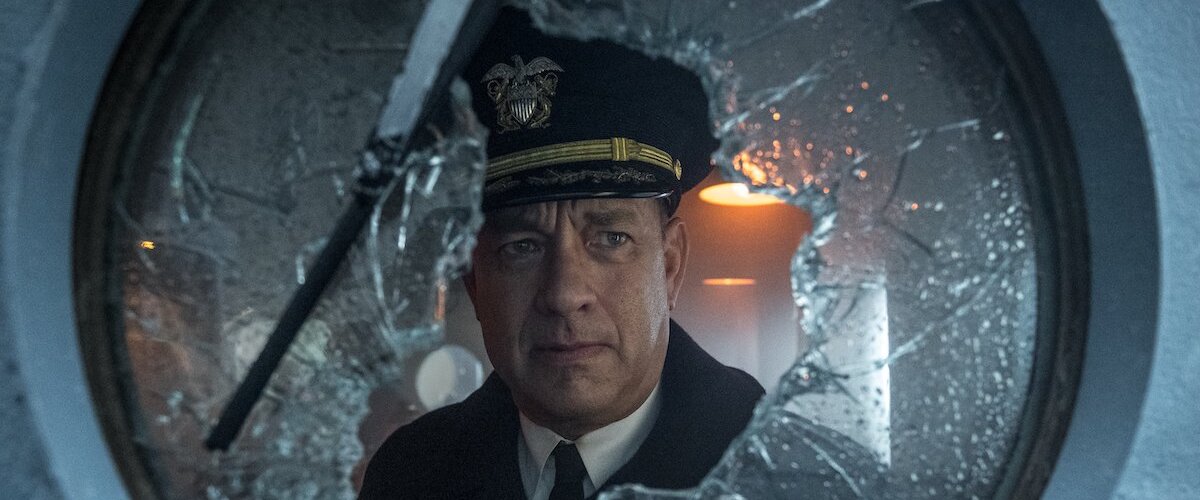
Film Review: Greyhound
Film Reviews
Greyhound
Director: Aaron Schneider
Stage 6 Films and Playtone
Streaming on AppleTV+: 07.10
There is a little known passage in Sun Tzu‘s The Art of War which states “Never go into battle unless Tom Hanks is your commanding officer, especially if you are in World War II or you are an anthropomorphic toy.”
Nobody else can take command like Hanks, both in terms of his fortitude as a military leader and in the sheer power of his presence on screen. In Greyhound, an adaptation of C.S. Forester‘s novel The Good Shepherd, Hanks plays Ernest Krause, who commands a Destroyer named the USS Keeling (call sign “Greyhound”). During the early days of the United States’ involvement in World War II, Krause leads an international convoy of 37 Allied ships across the North Atlantic while being pursued by a wolfpack of German U-Boats.
Greyhound is a war film that is driven not so much by plot and characters as it is by immersing you in the experience. While Hanks’ presence may bring to mind Saving Private Ryan and the nautical aspect films such as Das Boot or U-571, perhaps Greyhound’s closest cinematic kinsman would be Master and Commander: The Far Side of the World, though that film was more episodic and slowed down occasionally to focus on the dynamics of the crew and life at sea. The streamlined and focused approach to storytelling in Greyhound isn’t a weakness, though: It’s a deliberate choice and a strength that allows it to stand apart as a classic of the war genre.
Director Aaron Schneider (Get Low) keeps the pacing brisk and the atmosphere tense and claustrophobic—as it should be onboard a Naval vessel. The seamless visual effects make this easily the most visually impressive film of 2020 up to this point, and Schnieder, along with cinematographer Shelly Johnson, knows how to use the widescreen aspect ratio to maximum effect, and it’s very apparent that this was always intended to be seen on the big screen. While the grandeur may be dulled down a bit by the small-screen release, the core visuals still result in a highly cinematic experience.
The screenplay (by Hanks) is procedural but not without a sense of drama. While we aren’t given a lot of time to get to know the characters as people, they very much play as people. The script has plenty of nice and understated little moments that humanize these characters, and it puts into perspective the fact that these men aren’t just serving on this boat, but living on it.
While Greyhound undoubtedly belongs to Hanks, but he is ably supported by the rest of the cast, especially Stephen Graham as his second in command and Rob Morgan as the head chef and one of the few black crewmembers. Elisabeth Shue has a very small role as the woman Krause loves, and her presence stays with him throughout the film through the many layers Hanks brings to his outstanding performance. Shue now holds a coveted place in pop culture as the only actress to play the love interests of both Alex P. Keaton and his Uncle Ned, and one can only hope that she doesn’t come between them.
Greyhound doesn’t pack the emotional punch that we’ve come to expect from war films these days, but it’s far from a throwback to the adventurous era of Alistair MacLean epics. It’s taut and thrilling, but firmly grounded in reality. Hanks himself has suggested that it serves as an unintentional metaphor for our times, as we are alone at sea and battling the ever-ever-present Invisible Enemy that is COVID-19. To this I can only observe that I envy these sailors for having such a sharp and dedicated commander who ably leads and in whom they can place their faith and trust. –Patrick Gibbs